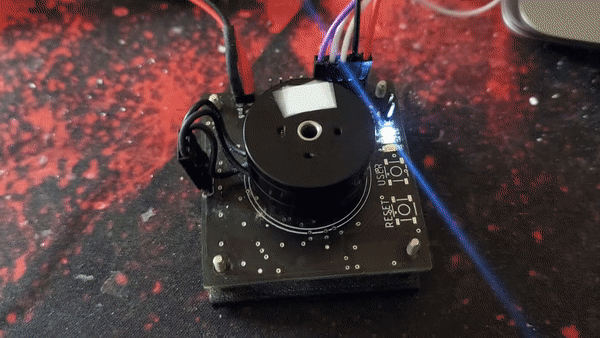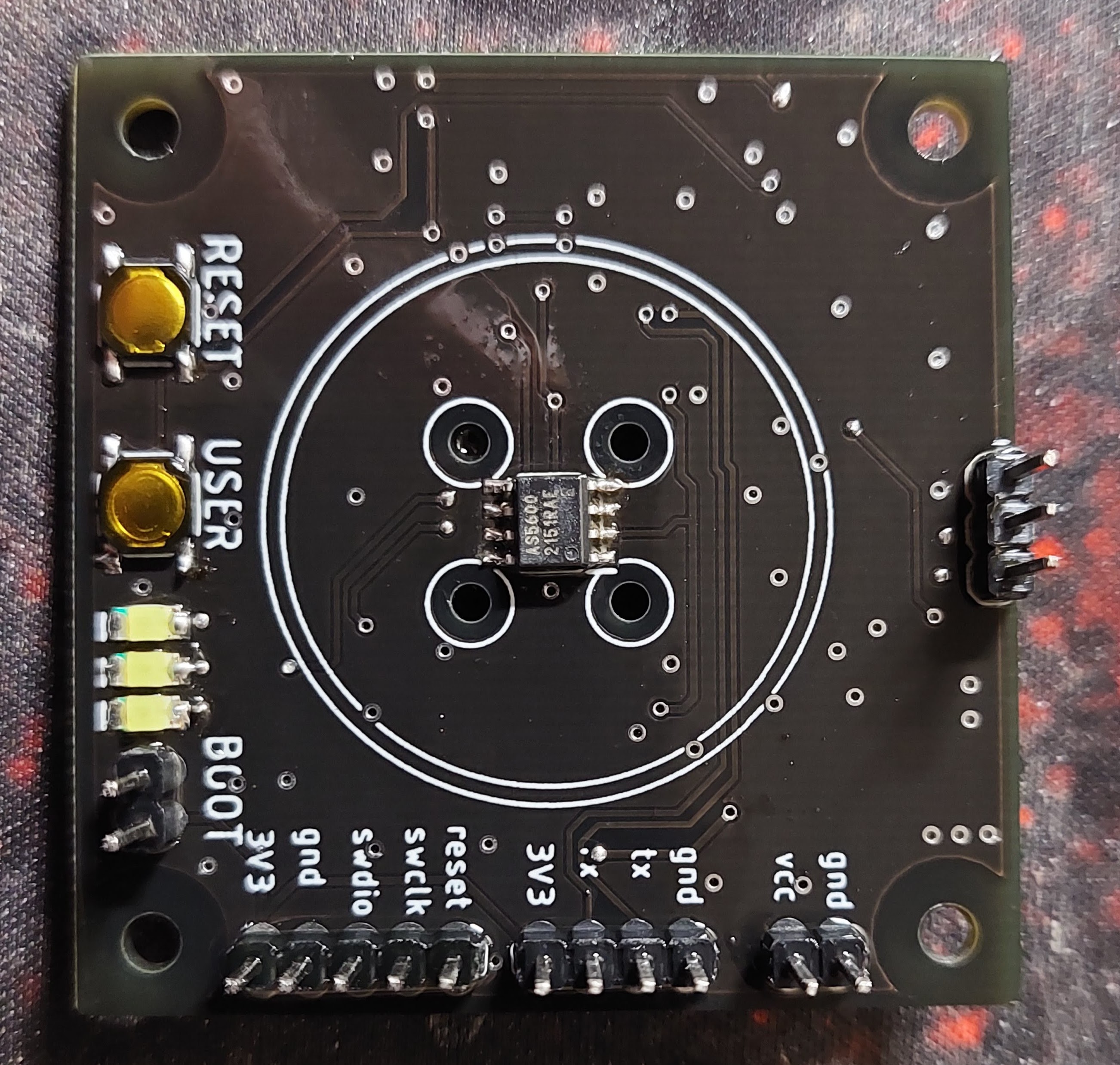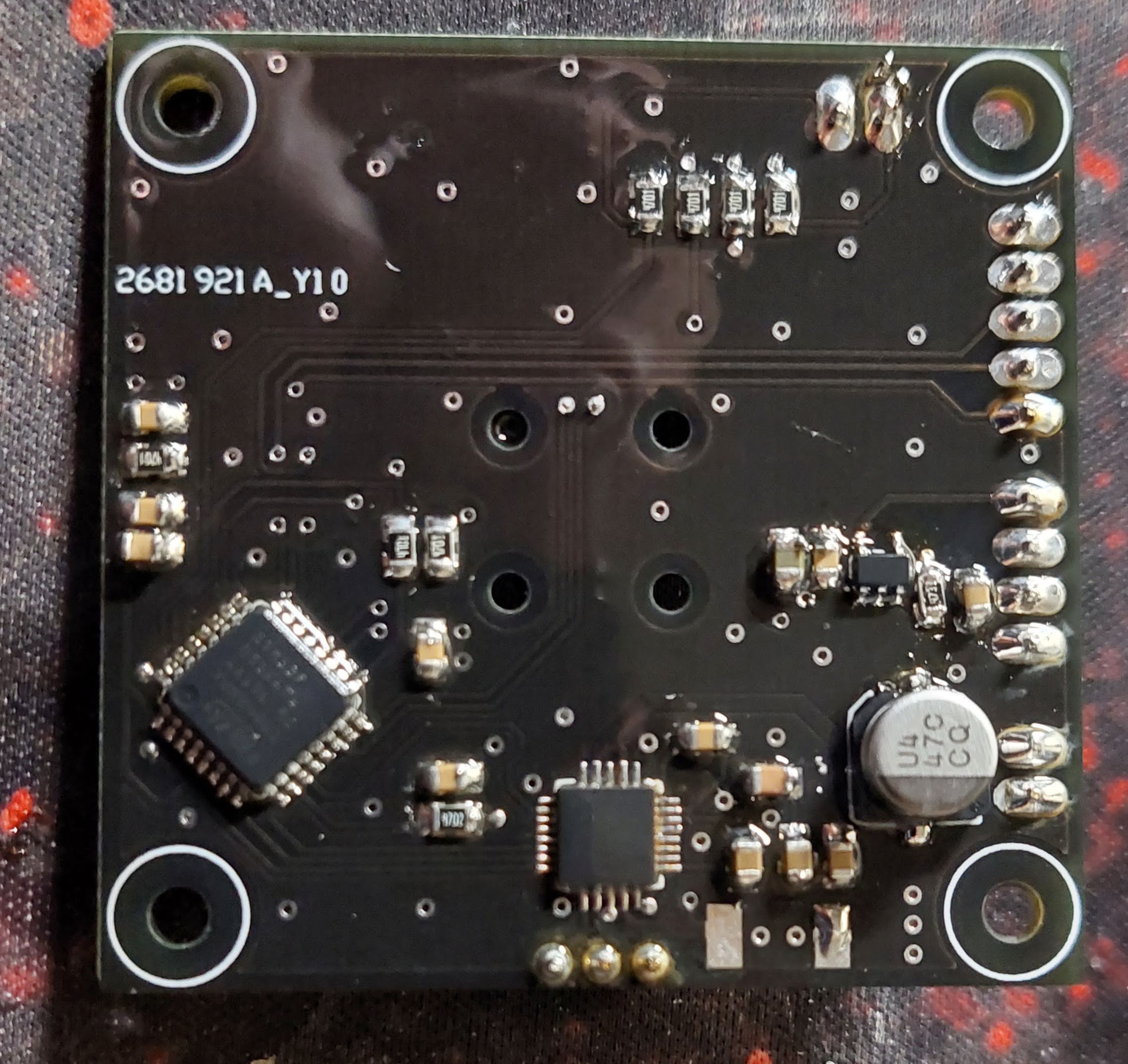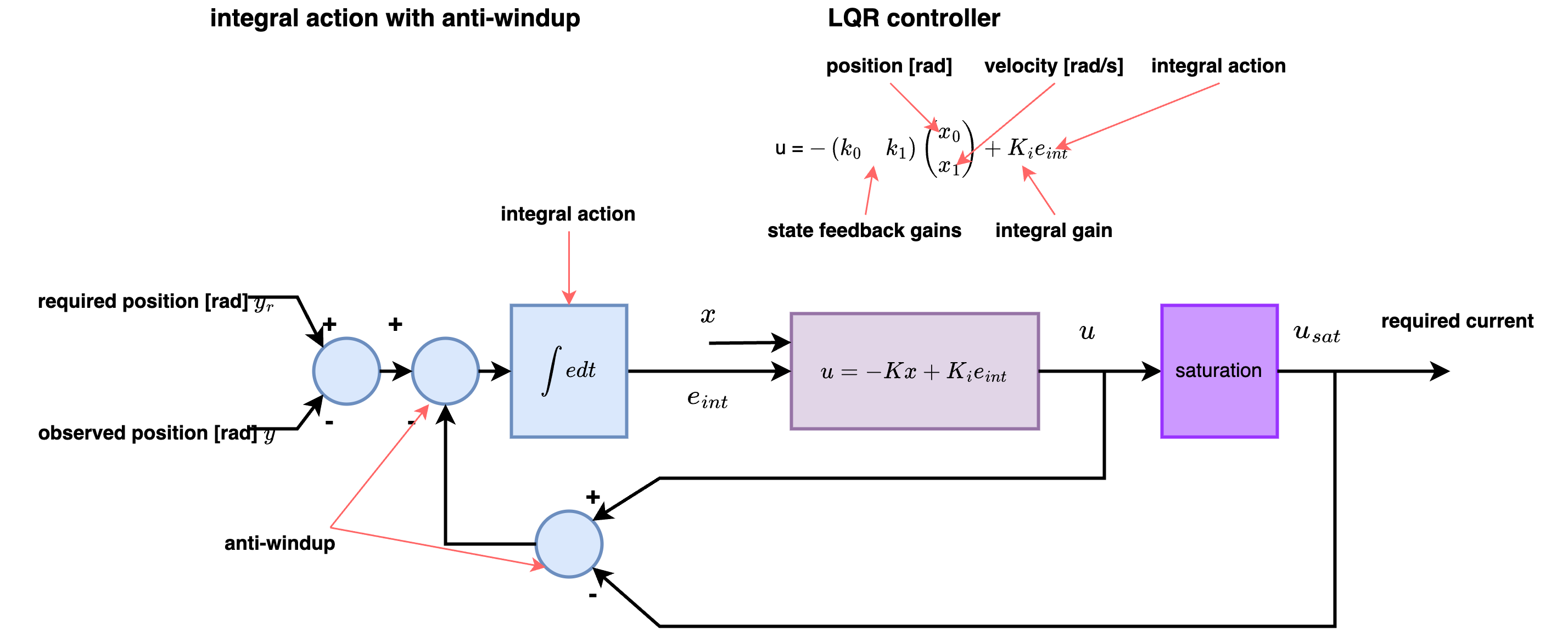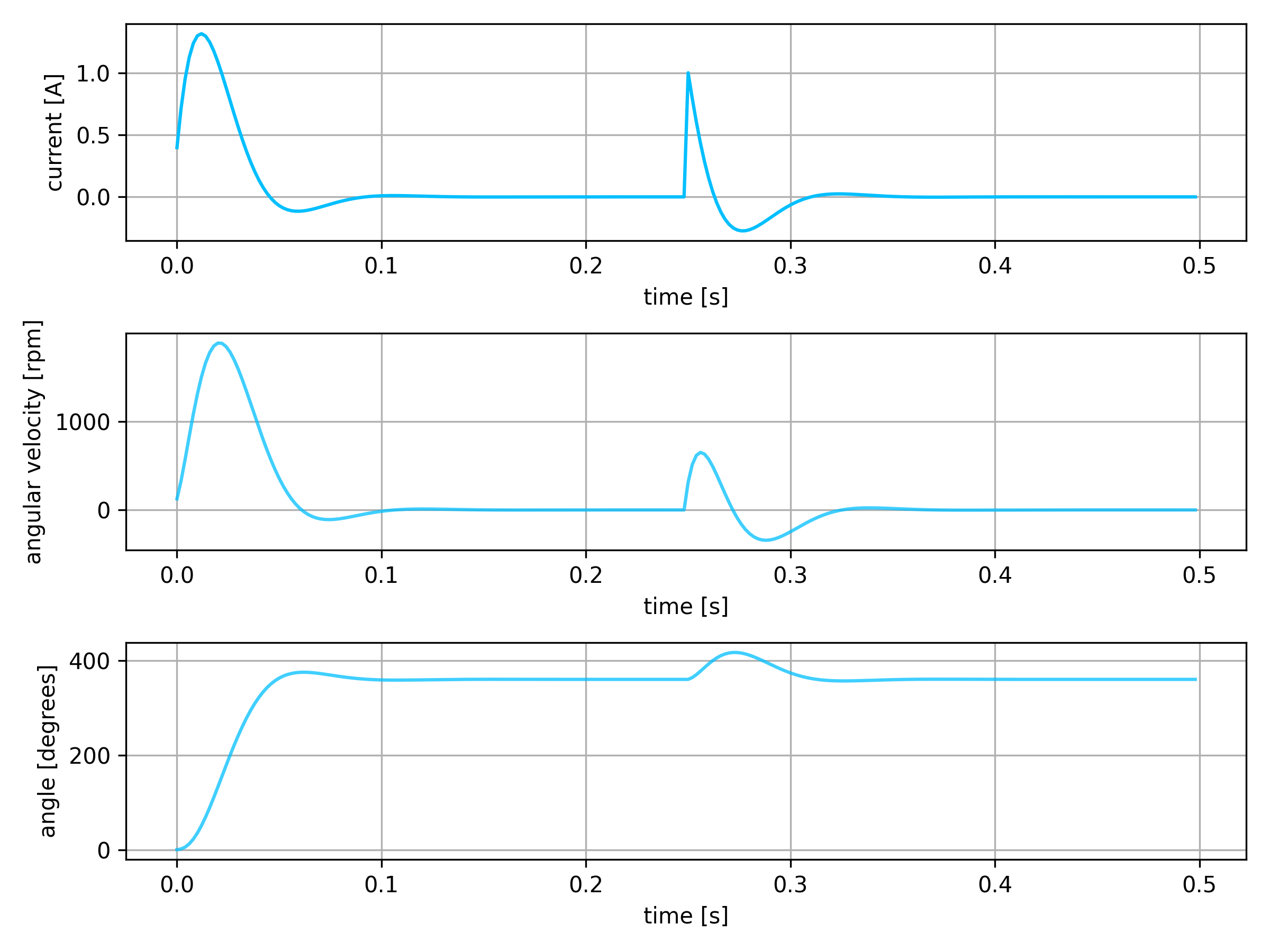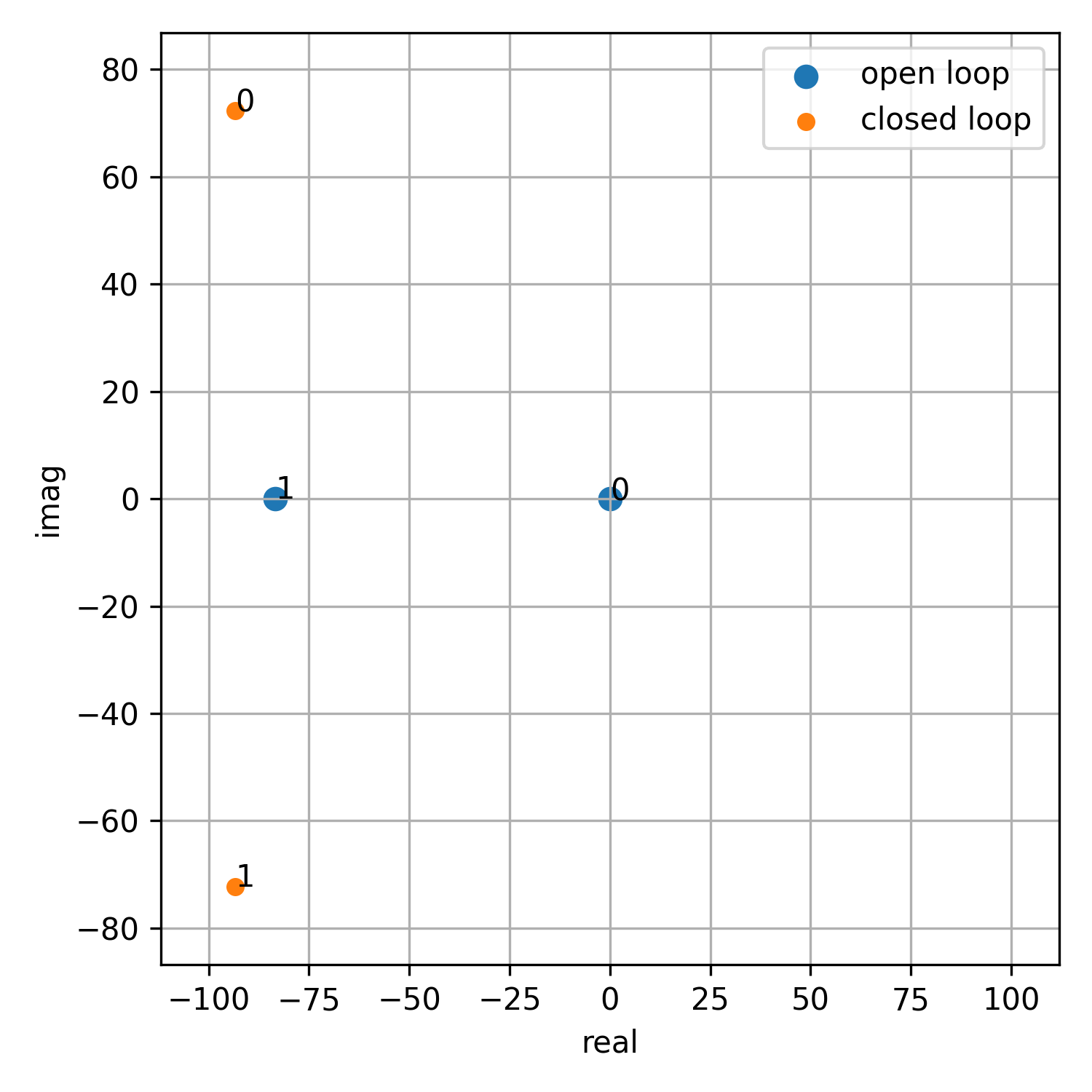utils : utils
- testing utils and simulations
- transformation tests : transform_test.py
- PI current synthetis : pi_torque.ipynb
- LQR synthetis : lqr_design.ipynb
- requires LibsControll
hardware : hardware
-
eagle files
-
3D priting parts (jig for magnet centering)
-
IMPORTANT - in schematic is wrong MP6540HA, correct is MP6540H (pwm only driver with enable)
-
MCU : stm32f051, arm cortex m0, 48MHz
-
3phase driver : MP6540H (DONT MP6540HA), 5A, 50V
-
encoder : AS5600, 12bit, i2c
firmware : firmware
- main code for stm32f051
- core is in user folder
- see motor.cpp and motor_control.cpp to understand all details
basic tranformations tests :
- clarke - park - pwm scaling
- see transform_test.py
- sine and cosine is precomputed, 1024 values arrays
- angle 2pi == 1024 (or 0) into tables
- theta ranges from <0, 1023>
- SINE_TABLE_MAX represents "one", 1023 in tables
- square root of 3 is also precomputed, as fraction of x/1024
- all divisions are by power of 2 - to avoid slow division
- this can easily run few kHz on cortex m0 (48MHz ARM)
#define SQRT3 ((int32_t)1773) // sqrt(3) = 1773/1024
#define SQRT3INV ((int32_t)591) // 1/sqrt(3) = 591/1024
void Motor::set_park(int32_t d, int32_t q, uint32_t theta)
{
//inverse Park transform
int32_t alpha = (d*cos_tab(theta) - q*sin_tab(theta))/SINE_TABLE_MAX;
int32_t beta = (d*sin_tab(theta) + q*cos_tab(theta))/SINE_TABLE_MAX;
this->set_clarke(alpha, beta);
}
void Motor::set_clarke(int32_t alpha, int32_t beta)
{
//inverse Clarke transform
int32_t a = alpha;
int32_t b = -(alpha/2) + (SQRT3*beta)/(2*1024);
int32_t c = -(alpha/2) - (SQRT3*beta)/(2*1024);
this->set_phases(a, b, c);
}
void Motor::set_phases(int32_t a, int32_t b, int32_t c)
{
//transform into space-vector modulation, to achieve full voltage range
int32_t min_val = min3(a, b, c);
int32_t max_val = max3(a, b, c);
int32_t com_val = (min_val + max_val)/2;
//normalise into 0..MOTOR_CONTROL_MAX
int32_t a_pwm = ((a - com_val)*SQRT3INV)/1024 + MOTOR_CONTROL_MAX/2;
int32_t b_pwm = ((b - com_val)*SQRT3INV)/1024 + MOTOR_CONTROL_MAX/2;
int32_t c_pwm = ((c - com_val)*SQRT3INV)/1024 + MOTOR_CONTROL_MAX/2;
a_pwm = clamp((a_pwm*PWM_PERIOD)/MOTOR_CONTROL_MAX, 0, PWM_PERIOD);
b_pwm = clamp((b_pwm*PWM_PERIOD)/MOTOR_CONTROL_MAX, 0, PWM_PERIOD);
c_pwm = clamp((c_pwm*PWM_PERIOD)/MOTOR_CONTROL_MAX, 0, PWM_PERIOD);
set_pwm(a_pwm, b_pwm, c_pwm);
}- controller is first discretised in constructor
- dt is sampling period in miliseconds
- kp, ki, kd are common controller constants, multiplied by 16384, to avoid floating point
k0 = kp + ((ki*dt)/1000) + ((kd*1000)/dt);
k1 = -kp - 2*((kd*1000)/dt);
k2 = ((kd*1000)/dt); - whole PID is just 3 multiplications and 4 additions
- to avoid integral windup, only clamping output is necessary
int32_t PID::step(int32_t error)
{
this->e2 = this->e1;
this->e1 = this->e0;
this->e0 = error;
int32_t du = (k0*e0 + k1*e1 + k2*e2)/16384;
u+= du;
//anti windup
if (u > antiwindup_max)
{
u = antiwindup_max;
}
if (u < antiwindup_min)
{
u = antiwindup_min;
}
return u;
}see lqr_design.ipynb
